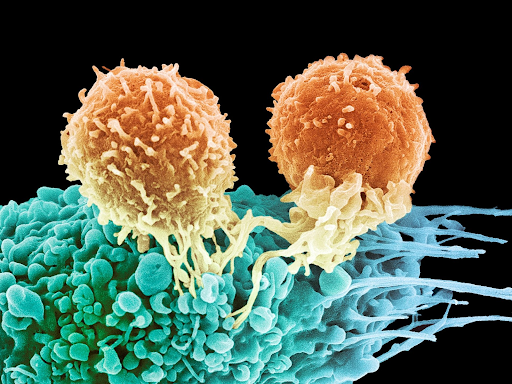
Lung cancer is a disease and a kind of cancer that starts in the lungs. It’s one of the most usual types of cancer in the world and is responsible for a number of cancer-related demises. Lung cancer occurs when unusual cells in the lungs grow and reproduce uncontrollably, forming a tumor.
There are two main types of lung cancer non-small cell lung cancer( NSCLC) and small cell lung cancer( SCLC). NSCLC is the most common type. Although less common, SCLC is generally wild and spreads quickly to other body parts.
Smoking is the main reason of lung cancer, with around 85 cases contributed to tobacco use. The threat of developing lung cancer increases with the number of cigarettes smoked and the time of smoking. Still, it’s important to note that nonsmokers can also develop lung cancer, many times due to exposure to smoke, radon gas, air pollution, or inheritable factors.
The symptoms of lung cancer may differ depending on the stage and type of cancer. Still, they can include nonstop coughing, chest pain, briefness of breath, weight loss, fatigue, and respiratory infections. Unfortunately, lung cancer is frequently identified when the disease has formerly spread beyond the lungs, making treatment difficult.
Diagnosis generally involves a combination of imaging tests, similar to chest X-rays, CT scans, and MRI scans, as well as a biopsy to confirm the presence of cancer cells. Once discovered, the treatment depends on the cancer stage and may involve surgery, radiation therapy, chemotherapy, and targeted therapy. In some cases, a combination of these treatments may be used.
Prevention plays an important part in reducing the chronicity of lung cancer. The most effective preventative measure is to dodge smoking or to quit smoking if you’re a smoker. It’s not too late to quit, as the threat of developing lung cancer decreases significantly after quitting. Also, reducing exposure to environmental threat factors, similar to secondary smoke and occupational hazards like asbestos, can also help lower the threat.
Early discovery of lung cancer can improve treatment issues and increase survival rates. Thus, screening programs are recommended for high-threat individuals, similar to long-term smokers or those with a family history of lung cancer.
In recent times, advancements in targeted therapies and immunotherapies have provided new possibilities in the treatment of lung cancer. These treatments aim to target specific inheritable mutations or activate the body’s immune system to fight cancer cells. Clinical trials are also ongoing to explore new treatment options and improve overall patient issues.
Now, The main cause of lung cancer, for the majority of cases, is smoking tobacco products. Cigarette smoking has been linked to an increased threat of developing lung cancer and several other types of cancer and respiratory conditions. In fact, smoking is responsible for roughly 85 of all lung cancer cases. Let’s explore this cause in further detail.
When tobacco is burned and smoked, it releases a complex blend of chemicals into the lungs, including carcinogens(cancer-causing substances). These carcinogens can damage the DNA in lung cells, leading to inheritable mutations that promote the uncontrolled growth of odd cells and the arrangement of tumors. The longer a person smokes, the more cigarettes they devour, and the more they risk developing lung cancer.
It’s important to note that smoking any form of tobacco, including cigarettes, cigars, and pipes, increases the threat of lung cancer. Also, the threat isn’t limited to active smokers. Exposure to secondary smoke, also known as environmental tobacco smoke, is a significant threat factor as well. Breathing in the smoke exhaled by smokers or the smoke released from burning tobacco products can be dangerous, and nonsmokers exposed to secondary smoke are more likely to develop lung cancer.
Apart from tobacco smoke, other threat factors contribute to lung cancer development. Radon gas, a naturally being radioactive gas that can ooze into homes and structures, is the alternate leading cause of lung cancer. Dragged exposure to high radon situations increases the threat, especially in inadequately ventilated spaces. Occupational exposure to substances similar as asbestos, uranium, arsenic, chromium, nickel, and some petroleum products can also raise the threat of lung cancer, particularly for individuals working in industries like mining, construction, and manufacturing.
Researchers have also identified inheritable factors that can impact a person’s vulnerability to lung cancer in recent times. Certain inheritable variations or mutations can increase the threat of developing the disease, especially when combined with exposure to tobacco smoke or other environmental factors. Still, it’s important to note that these inheritable factors play a lower part in overall lung cancer cases compared to smoking and environmental exposures.
It’s worth mentioning that not all smokers develop lung cancer, and there are nonsmokers who do. This suggests that individual inheritable differences, underlying health conditions, and other environmental factors may contribute to the development of lung cancer in these cases. Still, the most significant and preventable cause remains tobacco smoking.
Efforts to reduce the incidence of lung cancer primarily concentrate on tobacco control and smoking conclusion enterprise. Public health campaigns, increased taxes on tobacco products, smoking bans in public places, and access to smoking conclusion programs and support have proven effective in reducing smoking rates and lung cancer cases. Encouraging smokers to quit and precluding youthful people from starting smoking are vital strategies for reducing the burden of lung cancer.
In conclusion, smoking tobacco, including active smoking and secondary smoke exposure, is the primary cause of lung cancer. The carcinogens present in tobacco smoke can damage the DNA in lung cells, leading to the development of cancer. Other threat factors, like exposure to radon gas and certain occupational hazards, can also contribute to lung cancer development. Still, given the overwhelming evidence, smoking conclusion and tobacco control measures remain crucial in reducing the prevalence of this deadly disease.




